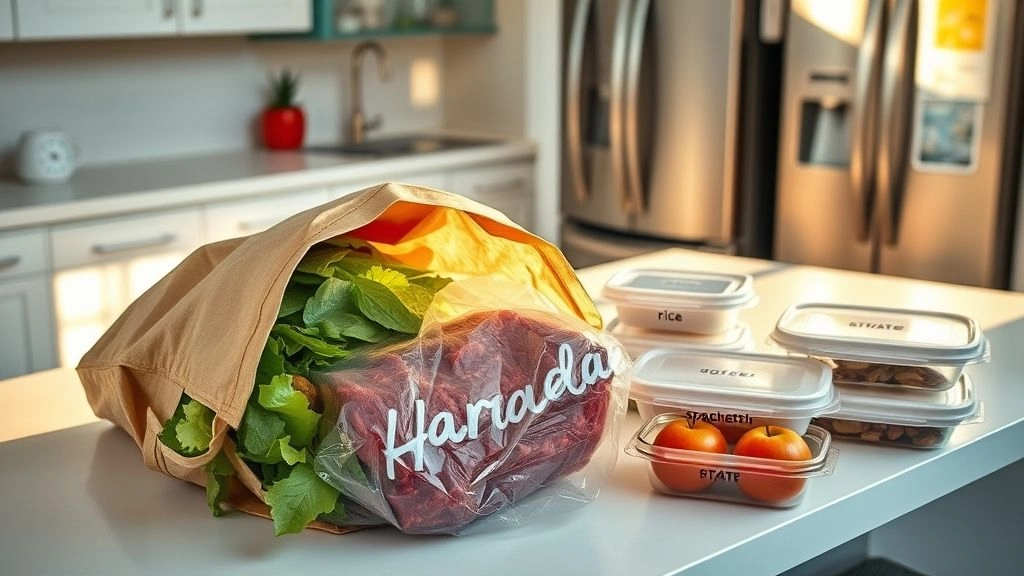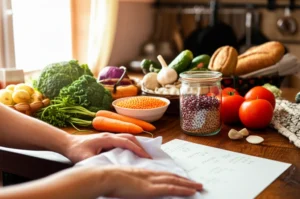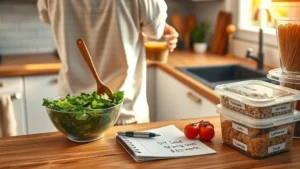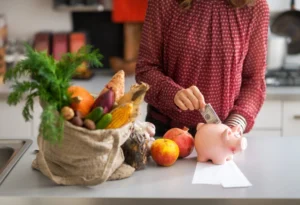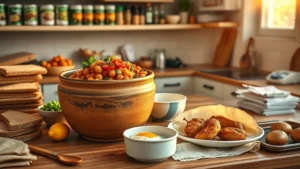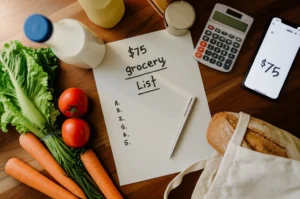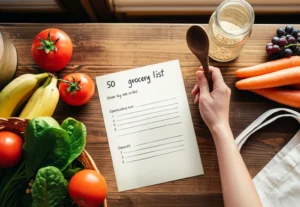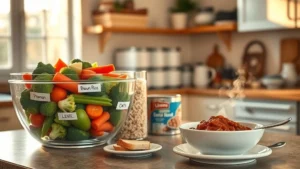Have you ever come home from the grocery store feeling all proud of your haul, only to find your fresh fruits turning sad and mushy within days? Or worse, that steak you were excited to cook goes off before you get the chance? Yeah, been there—watching food spoil before my eyes felt like tossing money down the drain. If you’re like me and ever say, “I hate spending money on food that just goes bad,” then stick with me. I’m going to let you in on some simple, down-to-earth tips to protect those groceries the minute you step through your door.
Because honestly, saving food quality saves money. And if you’re looking to stop spending money on unnecessary things—especially wasted groceries—this is for you.
Unload With Care
So, what’s the deal with how you bring groceries in? Turns out, it actually matters a lot. Think about it: leaving perishables sitting in a hot car or on the counter too long is like telling the bacteria, “Hey, party’s here!” The USDA and Health Canada say refrigerate perishables like meat, dairy, and certain fruits within two hours of getting home—tops. On a blazing summer day, it’s even less: one hour.
Why Two Hours? What’s the Risk?
Foodborne pathogens multiply fast if food sits out. We’re talking about yucky stuff like salmonella and E. coli that can make you super sick—and cost you big bucks. The “two-hour rule” helps keep bacteria growth in check and preserves your food’s flavor and texture better.
| Food Type | Maximum Time at Room Temperature | Quick Tip |
|---|---|---|
| Raw Meat & Poultry | 2 hours (1 hour if above 90°F) | Keep wrapped tightly and on bottom shelf |
| Dairy & Eggs | 2 hours | Check for cracks or damage before buying |
| Fruits & Vegetables | 2 hours | Wash only before use to avoid premature spoiling |
I used to treat unpacking like a casual drop-and-go—big mistake. Now I hit the fridge ASAP, and my food lasts way longer. Try unpacking cold items first, then pantry staples last. It’s such a small habit that pays off big time.
Separate and Conquer
Here’s a classic move to protect food quality and your health: keep raw meats and seafood separate from everything else. When you bring home your groceries, bag these items separately—don’t let raw meats slosh juices over your clean produce or bread bags. Once home, store them on the fridge’s bottom shelf so any drips won’t ruin your ready-to-eat foods. It’s not just about spills—it’s about stopping cross-contamination that speeds spoilage and risks your family’s health.
This practice might feel like extra steps, but trust me, it’s worth it—especially if you’re trying to rescue your budget from the clutches of food waste. Plus, if you hate spending money on food that you don’t actually eat, this is one tidy hack worth adopting.
Keep Storage Clean and Smart
While you’re at it, grab a stash of reusable containers. Moving dry goods, bulk beans, or leftovers into airtight containers extends their shelf life and keeps pests out. Plus, you avoid the hassle of clumsy store packages that rip or don’t reseal well. I found myself saving a surprising amount by storing items like rice and flour properly—way less spoilage, way more meals stretched.
Chilling: More Than Just Cold
You’ve got your fancy fridge, but is it doing its job? Most fridges should hover at or below 40°F (4°C) and freezers at 0°F (-18°C). If you don’t already own a fridge thermometer, add one to your cart next shopping trip. It’s cheap and a game changer.
Why does this matter? If your fridge is too warm, your food will spoil faster—and again, that’s your hard-earned cash turning into compost. Plus, don’t cram your fridge full. Overcrowding kills airflow, and the temperature gets uneven. Imagine trying to chill a sauna full of sweaty runners… Yeah, your fridge feels that way, too.
Best Places for Your Groceries
Have you ever noticed the crisper drawer in your fridge? This magical little drawer controls humidity, which is a major factor in keeping produce fresh. Typically, high-humidity drawers are great for leafy greens, while low-humidity spaces suit fruits like apples and grapes.
And here’s a cool trick I picked up: use ethylene gas absorbers (you know, those little gadgets or sheets that suck up the gas fruits emit when ripening). They slow down spoilage and help your fridge produce drawer last longer. Yeah, it’s a tiny investment that can save a bunch of money on wasted veggies and fruits.
If you’re struggling with how to stop spending money on snacks that you then let go bad, controlling the freshness of your fruits and veggies might just curb that impulse snack buying too.
Freeze It Like a Pro
Buying in bulk is frugal gold, but only if your food doesn’t turn into one giant freezer burn disaster. Freeze your meats, bread, and even some fruits if you won’t eat them soon. But here’s the kicker: the packaging matters.
Use freezer bags or containers designed for cold storage—not just any plastic bag. Double-wrap meats to prevent freezer burn. And remember, freeze foods while they’re fresh. Freezing spoiled items just… well, freezes the badness.
Freezer Life Span Quick Guide
| Food | Freezer Shelf Life | Thawing Tip |
|---|---|---|
| Ground Meat | 3–4 months | Defrost overnight in fridge |
| Berries | 10–12 months | Cold water thaw works fast |
| Bread | 2–3 months | Toast straight from frozen |
Freezing leftovers also gives you superhero-like power in the kitchen—pull out ready meals on busy nights and save a ton on takeout temptation. If you really want to dive into stocking your freezer smarter, i hate spending money on food has some great real-talk tips on using what you have.
Organizing for Success
When foods are organized, you avoid the “what did I buy even?” mystery that eats your budget alive. Use clear, inexpensive containers or repurpose boxes to keep your pantry tidy. Label stuff and keep an inventory list. This makes meal planning easier—and you’ll find those forgotten bags of beans that should’ve been dinner last week.
Plus, smart organization means less spoilage because things don’t get buried and ignored. I love using dollar store containers for cheap airtight storage. It saved me from wasting a ton of legumes and grains that had gone stale.
Keep It Visible and Rotated
Rotate your stock so you use older items first. This simple habit slashes waste. Got foods with expiration dates coming up? Plan your menu to use them first… no shame in that $1 can of spaghetti sauce first, even if it’s not your favorite brand!
Clean Hands, Clean Food
Okay, this might sound obvious, but washing your hands properly before unpacking groceries and handling food protects your food’s quality too. Germs not only risk your health, but they can also speed spoilage.
Wash counters, cutting boards, and containers regularly with hot soapy water. When it comes to rinsing produce, just plain water works—skip the fancy chemicals which can damage the skin and speed spoilage.
Simple Habits, Big Results
Try to wipe down your shopping bags and containers when you get home, especially if they’re reusable. This little ritual can keep your fresh foods from catching unwanted germs or mold spores, which is surprisingly common.
Small Habits, Big Savings
What can you do to protect the quality of the foods you buy when you get home? Turns out, a whole lot with small habits—quickly chilling perishables, separating items, organizing your pantry, and keeping things clean.
If you find yourself spending too much on food or constantly throwing out produce, these steps will help turn that around without a ton of hassle. And if ever you find yourself overwhelmed by food costs, check out these how to stop spending money on unnecessary things tips to reset your budget.
Protecting your food quality is essentially protecting your budget and sanity. So next time you’re at the store or unpacking bags, think about it like this: you’re not just handling groceries—you’re guarding your savings, one smart step at a time.
Ready to Get Started?
Try trying one or two tips at a time. Start by testing your fridge’s temperature or by unpacking perishables first. Notice how long your fruits stay fresh or how long that ground beef lasts after buying. Those tiny wins build momentum.
Saving money is a journey, and protecting your food’s quality is one of the easiest wins you can snag along the way. Got any personal tricks or disasters you’ve learned from? Drop a note to yourself or a buddy; sharing is saving—especially when it’s about keeping groceries fresh and budgets intact.
And hey, if you want to tackle snackyy impulse buys that often sabotage your food savings, don’t miss out on how to stop spending money on snacks. It’s helped me dodge those mini money leaks big time.
Let’s make every grocery trip count—because your wallet deserves it.

